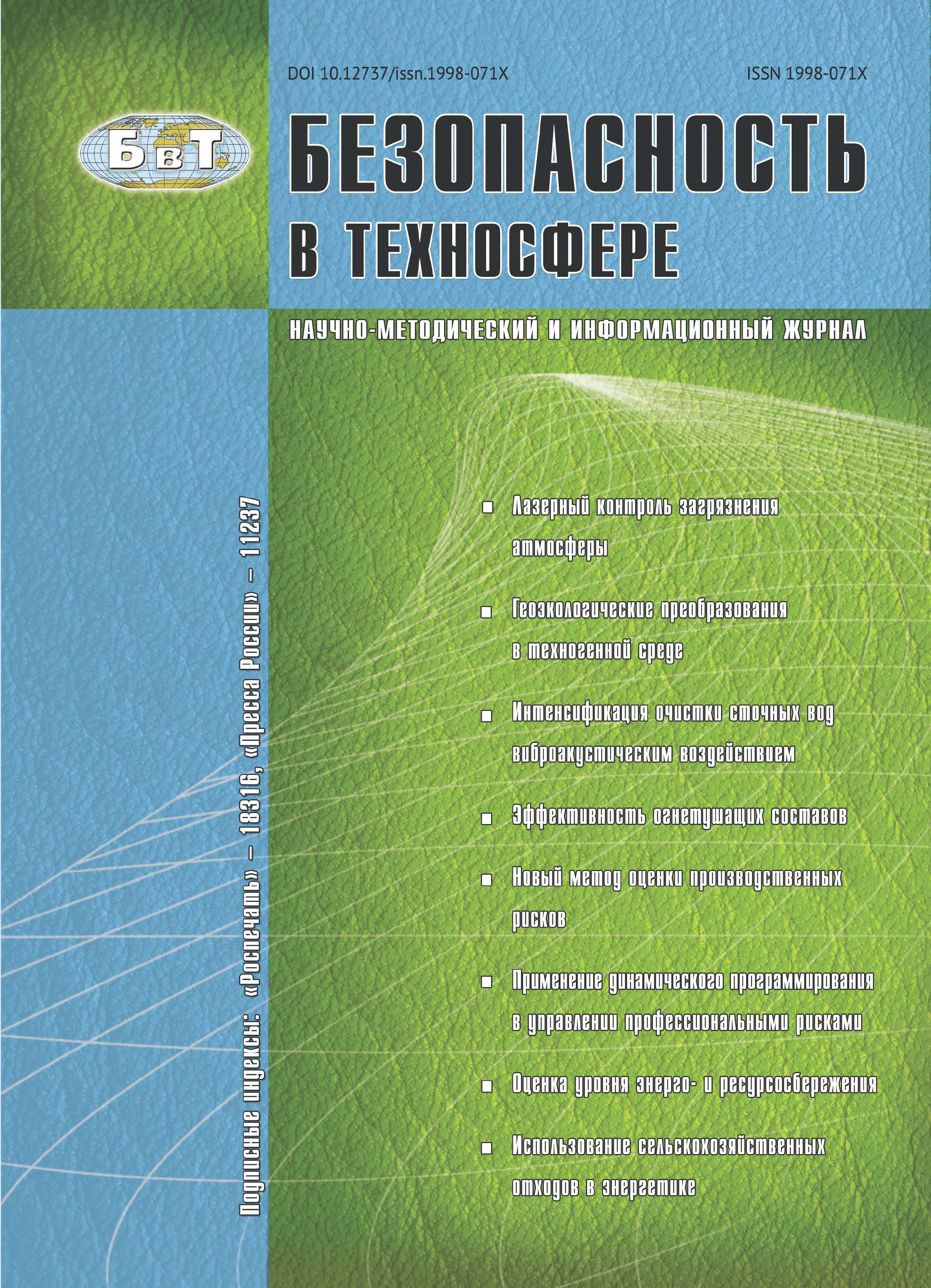The mathematical modeling of flotation process has been considered in this paper. It has been pointed out that in the event when there are different types of pollutants in water the generation of bubbles with wide size-consist is needed. A flotation setup with ejection aeration system having a disperser that allows generate the bubbles which size-consist is characterized by several sets with their own values of average diameters is considered. The mathematical model for flotation process description taking into account the division of bubbles into several groups in sizes and hydrodynamic situation in flotation chambers has been proposed. Based on proposed model have been obtained other models describing extraction of certain waste, considering their properties, in such a case the initial model has been complemented by stages of other processes: settlement stage during flotation of suspended substances with density higher than water density, self-floating stage during flotation of contaminations with density less than water density, and reverse stages during flotation of hydrophobic-hydrophilic contaminations. The example of time definition for the process of water treatment from suspended substances and oil products has been presented. It has been demonstrated that it is possible to considerate the two-chamber flotation setup with ejection aeration system having a disperser as a sequence of reactors providing ideal mixing and displacement. Taking into account the equations for the reactors providing ideal mixing and ideal displacement, and the proposed models for description of process passing in cameras, have been received dependences for determination of concentrations and cleaning time in each camera. The importance of mathematical modeling for flotation setups designing has been pointed out. Application of scientifically based approach at design allows create setups having bigger profitability and compactness at achievement of the required efficiency.
flotation wastewater treatment, mathematical model, aeration system’s parameters, bubble diameter, ejector, disperser.
1. Введение
Математическое моделирование флотационного процесса играет важную роль при разработке флотационных установок. Кинетическая модель позволяет определить время процесса при достижении требуемой эффективности, а более точное определение времени позволяет точнее определить габаритные размеры флотатора.
1. Rubinshtejn Ju. V., Filippov Ju. A. Kinetika f lotacii [Flotation kinetics]. Moscow, Nedra Publ., 1980, 374 p. (in Russian)
2. Beloglazov K. F. Zakonomernosti flotacionnogo processa [Regularity of flotation process]. Moscow, Metallurgizdat Publ, 1947, 144 p. (in Russian)
3. Polat M., Chander S. First order flotation kinetics models and methods for estimation of the true distribution of flotation rate constant. International Journal of Mineral Processing. 2000. Vol. 58, I. 1, pp. 145-166.
4. Yianatos J. B. Fluid flow and kinetic modelling in flotation related processes. Columns and Mechanically Agitated Cells-A Review. Chemical Engineering Research and Design. 2007. Vol. 85, I. 12, pp. 1591-1603.
5. Ksenofontov B. S. Ochistka vody i pochv flotaciej [Flotation water and soil treatment]. Moscow, Novye tekhnologii Publ., 2004. 233 p. (in Russian)
6. Ksenofontov B. S. Flotatsionnaya obrabotka vody, otkhodov i pochvy [Flotation treatment of water, waste, soil]. Moscow, Novye tekhnologii Publ., 2010. 272 p. (in Russian)
7. Ksenofontov B. S., Antonova E. S. Optimizatsiya flotatsionnoy ochistki stochnykh vod [Optimization of flotation wastewater treatment]. Vodoochistka [Water treatment]. 2015, I. 3, pp. 20-24. (in Russian)
8. Ksenofontov B. S. Flotacionnaja mashina dlja ochistki stochnyh vod [Flotation machine for wastewater treatment]. Patent na poleznuyu model’ № 149273 RF [Patent for utility model No. 149273 of the Russian Federation]. I. 36, 5 p. (in Russian)
9. Ksenofontov B. S., Antonova E. S. Issledovanie dispersnogo sostava vodovozdushnoy smesi, generiruemoy ezhektsionnoy sistemoy aeratsii, v protsesse flotatsionnoy ochistki stochnoy vody [Research of disperse composition of air-and-water mix generated by ejector aeration system during wastewater floatation treatment]. Bezopasnost’ v tekhnosfere [Safety in technosphere]. 2016, V. 5, I. 4. pp. 38-44. (in Russian)
10. Andreev S. Ju., Grishin B. M., Shirshin I. B., Hromova A. M. Matematicheskoe modelirovanie protsessov flotatsionnoy ochistki stochnykh vod [Mathematic modeling of flotation wastewater treatment]. Trudy Mezhdunarodnogo simpoziuma «Nadezhnost’ i kachestvo» [International Symposium “Reliability and quality”]. 2009, V. 2, pp. 256-257. (in Russian)
11. Derjagin B. V., Duhin S. S., Rulev N. N. Mikroflotacija: Vodoochistka, obogashhenie [Microf lotation: water treatment, concentration]. Moscow, Himija Publ, 1986. 112 p. (in Russian)
12. Edzwald J. K. Developments of high rate dissolved air flotation for drinking water treatment. Journal of Water Supply: Research and Technology-AQUA. 2007. Vol. 56, I. 6-7, pp. 399-409.
13. Bojarinov A. I., Kafarov V. V. Metody optimizacii v himicheskoj tehnologii [Methods of optimization in chemical technology]. Moscow, Himija Publ., 1969. 564 p. (in Russian)
14. Smirnov N. N., Volzhinskij A. I. Himicheskie reaktory v primerah i zadachah [Chemical reactors in examples and tasks]. Uchebnoe posobie dlya VUZov [Textbook for High Schools]. Leningrad, Himija Publ., 1986. 224 p. (in Russian)






